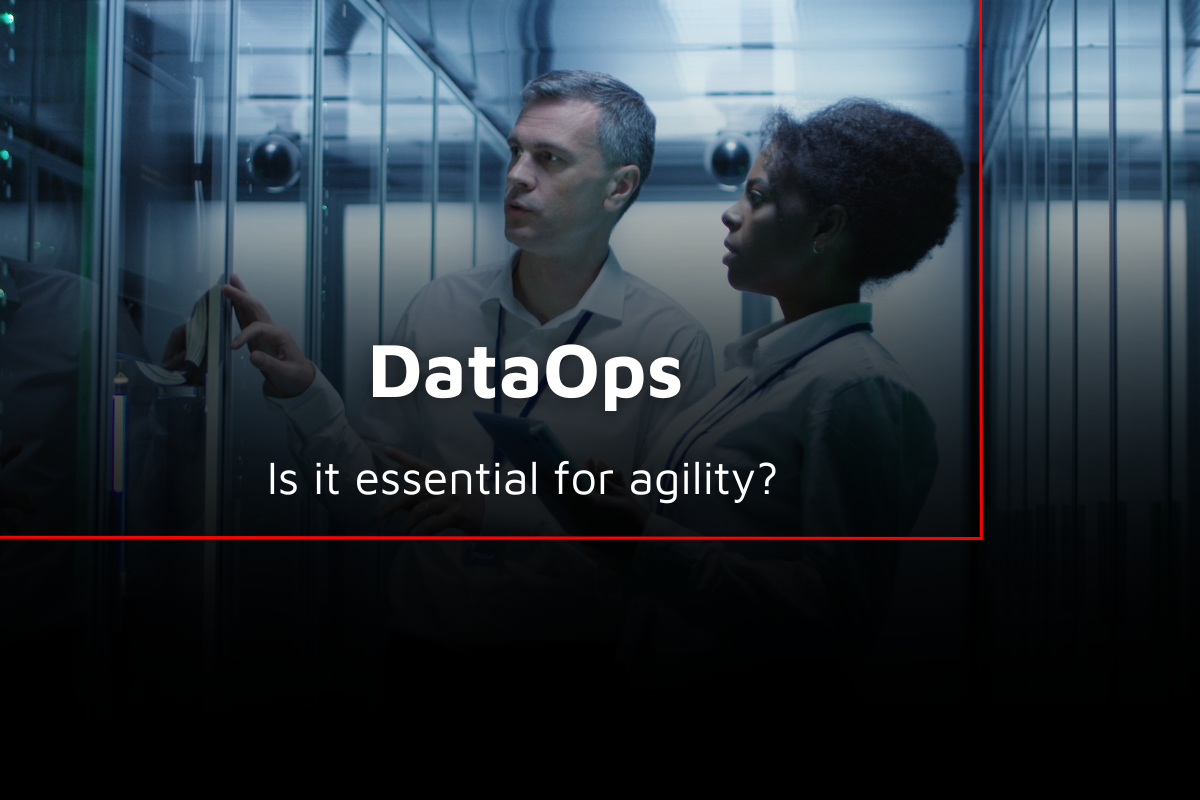How to implement DataOps for increased agility
16 March 2023 | Noor Khan

With the increasing need for real-time and predictive data analytics, DataOps is one of the key trends in Data Engineering in 2023. In this article we will cover how you can implement DataOps for increased agility, moving away from traditional, rigid practices.
What is DataOps?
Adopting the methods originated from Agile software development and DevOps, DataOps is a collection of practices, processes, tools and technologies used for data management, monitoring and operations. The approach focuses on improving efficiencies, speeding up data turnaround and reducing overall costs with automation, collaboration and communication at its core. There are invaluable benefits to be gained, however, it can be challenging to implement which we will discuss with tips on how to overcome them.
The principles of DataOps
As DataOps has derived from DevOps, there are some core principles which are at the foundation of the practice and they include the following:
- Provide highly satisfactory service to clients continuously and consistently with a priority on a reliable and swift data turnaround.
- Collaboration with daily communications with teams and stakeholders.
- Embrace the evolution of customer demands and requirements with a customer-centric approach by investing in continuous investment and learning of new technologies.
- Reflect and optimise with a focus on continuous improvement of processes, systems and tools.
- Adopt automation to drive efficiencies across all data operations.
Key benefits of DataOps
There are multiple benefits of DataOps and they include:
- Unified data – Data spread across disparate cloud sources can be accessed via dedicated APIs, removing the need to move the data.
- Faster access to data analytics – With the need for quick access and insights into data as the driving factor for the DataOps methodology, it is a core principle
- Democratization of data – Another key trend for data engineering in 2023, DataOps supports the democratization of data
- Facilitates collaboration – To remove inefficiencies and streamline data processes for a faster turnaround on data with collaboration across data teams.
- Automation – With automated processes involved in data ingestion, warehousing and processes. This enables businesses can benefit from saving time and resources, consequently saving on costs. Additionally, room for human error is mitigated.
- Improve data governance – Many organisations still find it a challenge to implement robust data governance practices to protect their data. With automation, data governance processes can be automated across the entire pipeline to improve security.
Challenges with implementing DataOps and how to overcome them
There may be many barriers to implementing DataOps, below we will cover them and how you can overcome them:
- Resistance to change – DataOps requires a mindset and culture shift, this will more than likely be met with resistance from all levels. This can be overcome with the focus on the prime benefits which save costs and resources across the business and increase efficiencies to alleviate manual tasks such as managing data pipelines.
- Technical investment – DataOps will require investment in integration technologies such as Data form which provides a framework to manage a variety of data warehousing technologies including the likes of Amazon Redshift, Snowflake and Google Big Query. To overcome them, you may consider outsourcing DataOps to avoid licensing fees for technologies not already within your tech stack.
- Finding the place to start – DataOps can be challenging to implement because it can be difficult to establish a starting point. To get started effectively, organisations need to reflect on their goals and ambitions when it comes to data. Then pilot DataOps in a specific area, measure success and then deploy slowly across all data areas.
- Understanding DataOps – DataOps is still a relatively new methodology which has been around since 2014. However, it’s still not a common practice with only around 41% of organisations successfully implementing according to Immuta.
Implement DataOps with Ardent
At Ardent, we have inhabited some of the core principles of DataOps including automation and communication. We work with our clients in collaboration to improve and optimise their data on an ongoing basis. If you are looking to:
- Improve your data infrastructure
- Optimise your data performance
- Implement robust data governance
We can help. Our leading data engineers can come on board to help you unlock the potential of your data. Get in touch to find out more, or explore our managed services.
Explore how our clients are succeeding with their data:
- Ensuring data availability with expert operational monitoring and support
- Improving data turnaround by 80% with Databricks
Ardent Insights

Are you ready to take the lead in driving digital transformation?
Digital transformation is the process of modernizing and digitating business processes with technology that can offer a plethora of benefits including reducing long-term costs, improving productivity and streamlining processes. Despite the benefits, research by McKinsey & Company has found that around 70% of digital transformation projects fail, largely down to employee resistance. If you are [...]
Read More... from How to implement DataOps for increased agility

Stateful VS Stateless – What’s right for your application?
Protocols and guidelines are at the heart of data engineering and application development, and the data which is sent using network protocols is broadly divided into stateful vs stateless structures – these rules govern how the data has been formatted, how it sent, and how it is received by other devices (such as endpoints, routers, [...]
Read More... from How to implement DataOps for increased agility

Getting data observability done right – Is Monte Carlo the tool for you?
Data observability is all about the ability to understand, diagnose, and manage the health of your data across multiple tools and throughout the entire lifecycle of the data. Ensuring that you have the right operational monitoring and support to provide 24/7 peace of mind is critical to building and growing your company. [...]
Read More... from How to implement DataOps for increased agility






